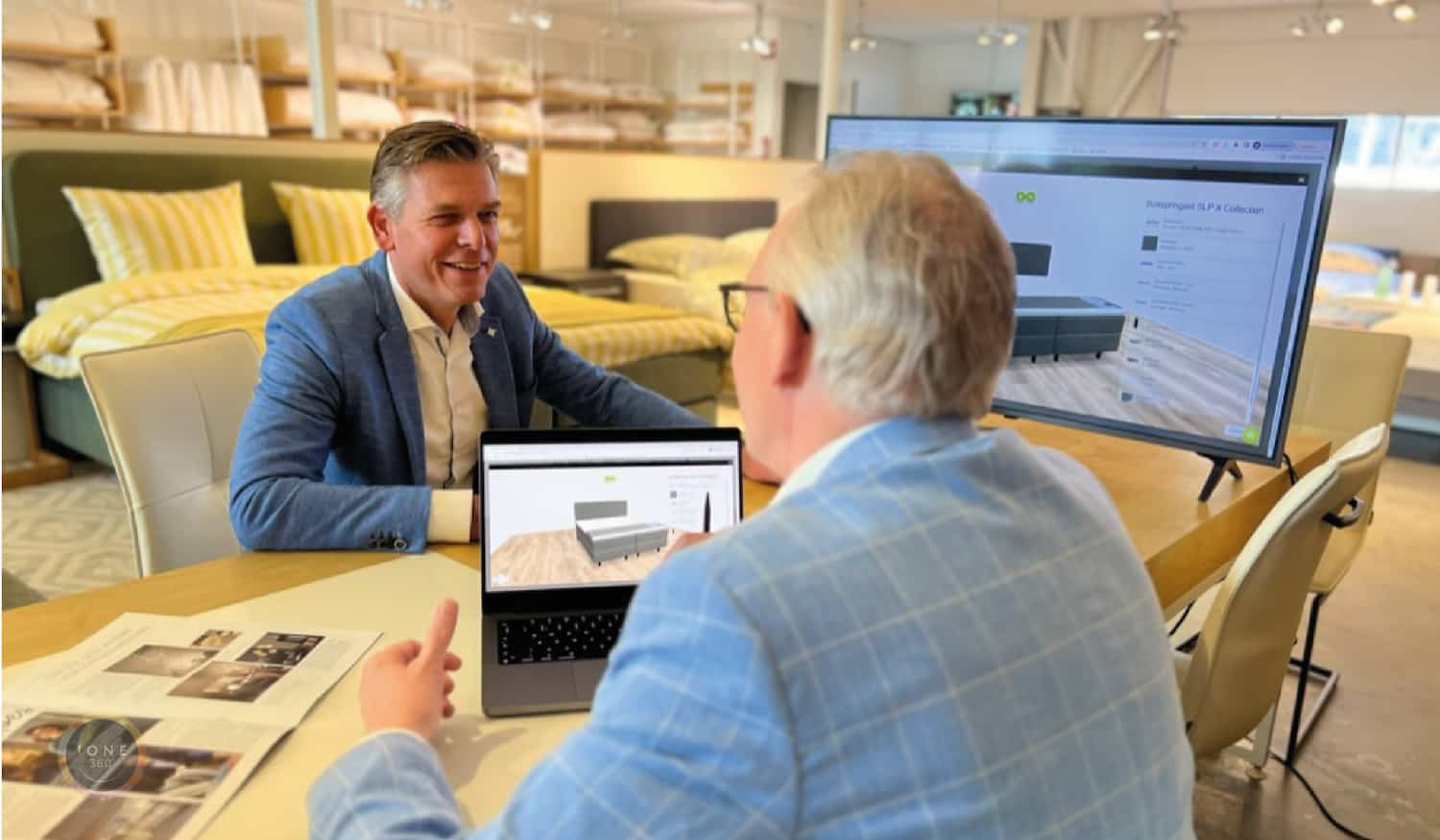
When you’ve seen what a 3D product configurator can do for your furniture business, it’s tempting to roll it out across every product line, immediately. At iONE360, we’re all about thinking big. But our experience tells us that the most successful implementations – those which maximize the ROI of 3D product configuration – start small. Here’s our advice for getting the best value from your investment in a 3D product configurator.
Pick a product group
Whether you have hundreds of product ranges or just a handful, it’s important to pick one to start with. That’s because in asset creation alone, building 3D models of every product in your catalog is going to eat up development hours. Doing everything in one hit will take time, not to mention a sizable upfront investment.
A better option is to focus on a single product group. This keeps your initial investment costs down and shortens the timeline for rolling out a product configurator. Limiting 3D models to one product group gives you a clear focus – and a chance to iterate on your process. You can also closely monitor ROI. With a single product like a dining chair, for example, calculating the breakeven for a 3D model is pretty straightforward – typically it’s the sale of one additional chair per year.
Now let’s say you offer a range of legs, sizes, and finishes for dining chairs. Setting up a configurator for this product is really straightforward and therefore, you’ll be up and running in no-time. Once embedded online and/or in-store, you can quickly start collecting useful data that can help optimize your marketing and sales effort that will help when deploying the configurator through following product groups.
Start making data-driven decisions
Starting small, and focussing on a single product group, gives you three advantages. First, it’s easier to understand the impact of your investment. Second, you gain a clearer view of the feasibility of 3D product configuration. Third, tracking the customer journey is simpler.
If you’re selling furniture online, you’re probably already tracking metrics on the customer journey, like the number of conversions, and where customers are dropping off in the sales cycle. This transactional data is generated by your webshop. Throw a product configurator into the mix, and you gain access to another layer of data – user interactions. You can see what potential customers are looking for in the configurator, and what they eventually decide to buy / not to buy.
Imagine being able to cross-reference data – like the most popular colors or materials of products configured and then left in the basket, with locational information. Suddenly, you’ve unlocked insights into trends and patterns that help you optimize your stock locations, stock levels, and promotions.
Companies with regional stores can shift stock of product variants to locations where they’re most popular and more likely to sell. Got a variant that’s not converting? Offer discounts to encourage sales.
Perhaps you have variants that are outperforming everywhere? Use the data to identify less popular variants – and take action to promote them in new ways to reduce your backlog of stock. Alternatively, maybe the data says it’s time to end a particular fabric, color, or style? All of this is made possible by a product configurator, so the impact of your investment becomes clearer.
By starting small, it’s easier to test and refine your deployment of a product configurator. Setting it up for one product group enables you to understand its feasibility. Starting small allows you to see its potential application and benefit to other lines.
Partner with a 3D visualization platform
Taking one product line at a time is a great way to realize and optimize the added value of 3D product configuration. And once you’ve refined your implementation for one product, it’s easy to expand the concept to other lines: both in-store and online.
Partnering with a 3D visualization platform, like iONE360, means you can scale your implementation at a pace that’s right for your business and get started quickly, without a large and risk investment upfront. The best part is that we’re actively invested in supporting your growth.
Discover where a 3D product configuration platform from iONE360 could take your furniture business. Book a call.
Curious to find out what we can do for you? Explore our solutions or Contact us